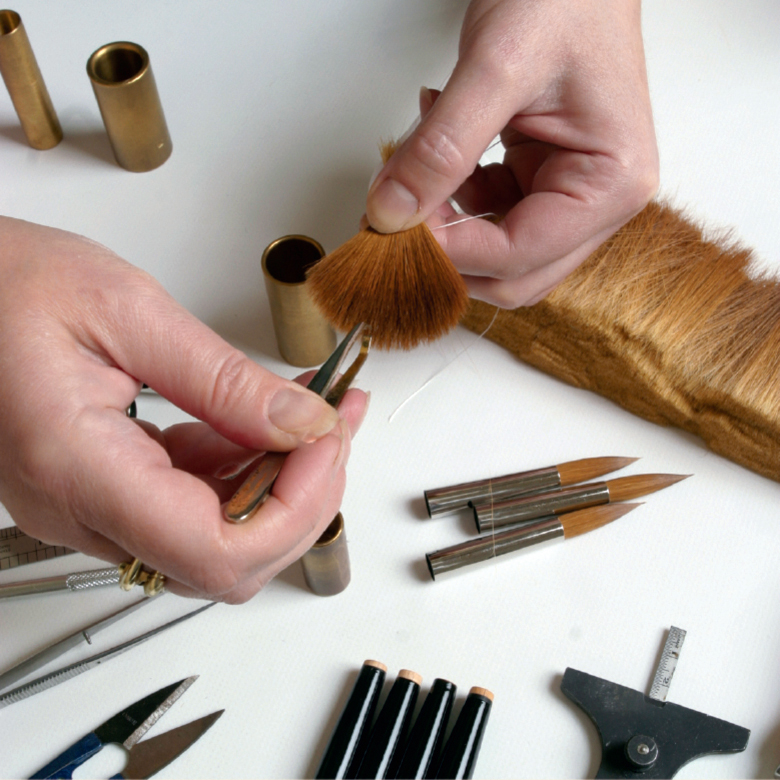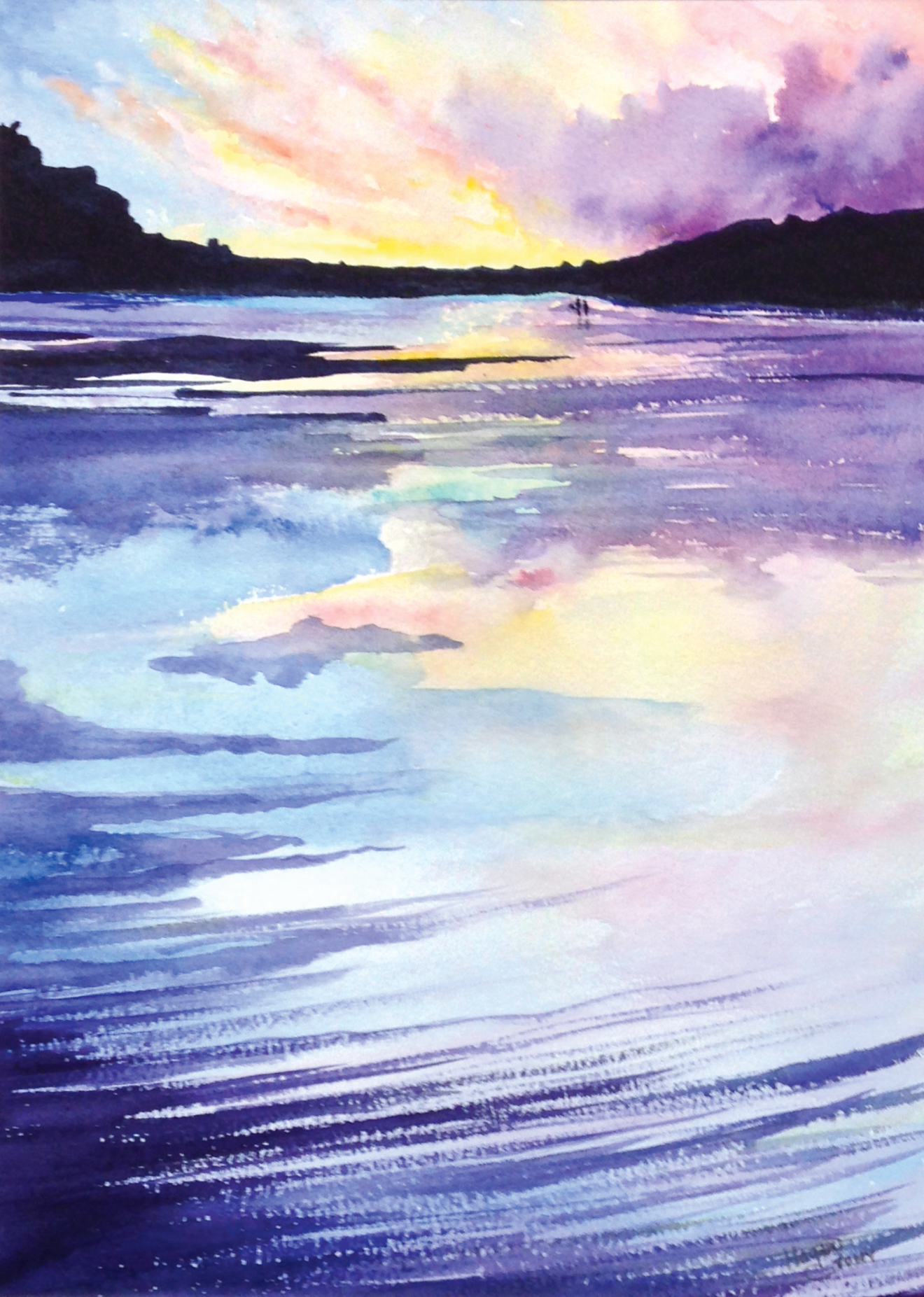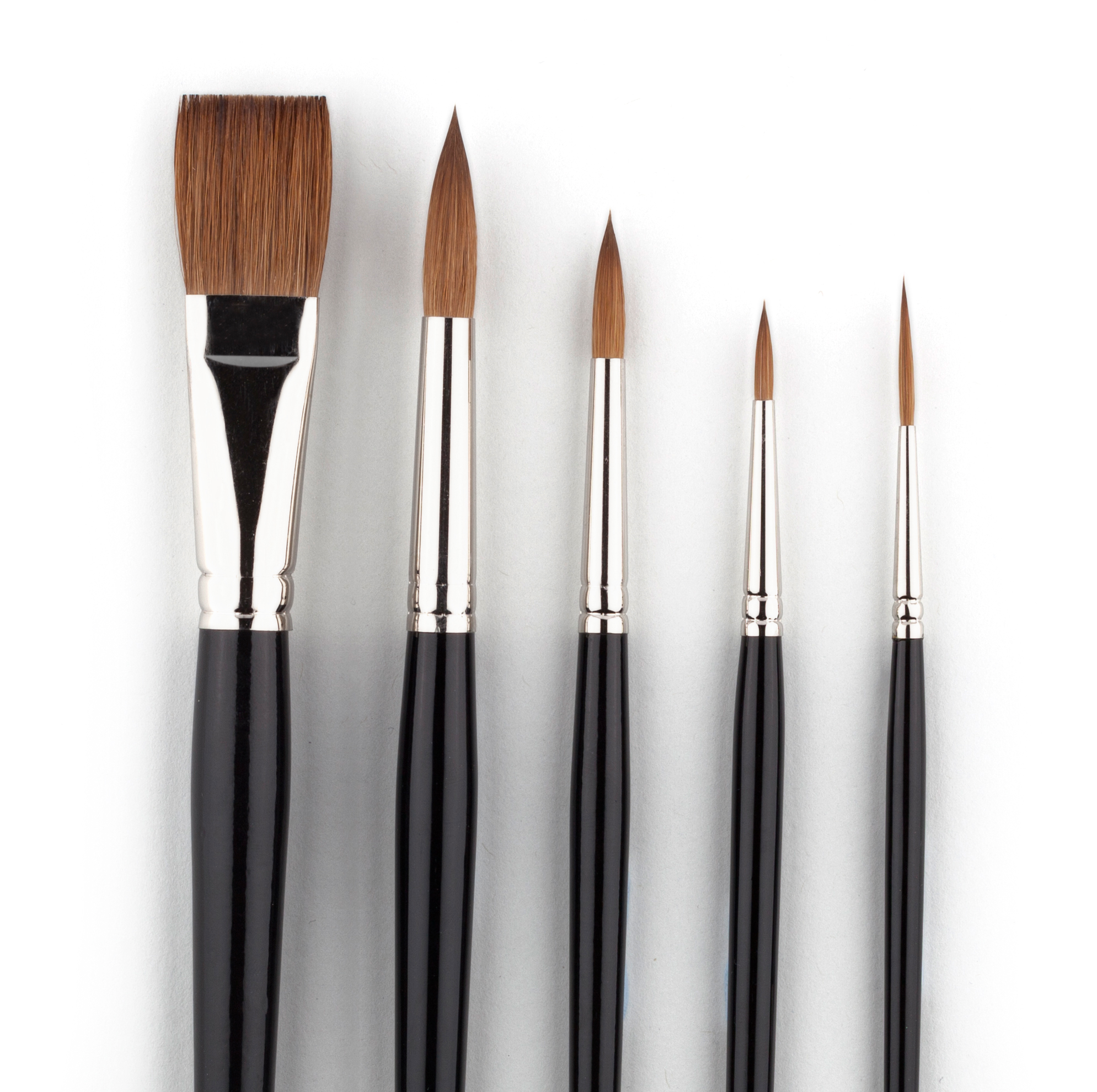Choose the right brushes for watercolour painting
Learn what to look out for when you're choosing watercolour brushes with these pro tips.

Back in my art college days when I was learning how to paint, I thought a sable-hair brush was only used by rich professional artists. I didn’t realise then that they aren’t as expensive as you’d think, or that they’d make my work so much better and easier to produce. There are a few things to consider when picking a quality brush…
Quality fibre

Fibre options for brushes include kolinsky sable hair, red sable, mongoose, badger, squirrel, blended (synthetic and natural hair mixed) or synthetic. Because of kolinsky sable’s strength, spring and snap (its ability to retain its shape), it is acknowledged as the gold standard fibre for watercolour and oil brushes by artists worldwide. It holds a fine point or edge, and if it’s properly cared for it will last for years.
Due to the quality of the hair, these brushes hold water and paint well. Because they hold a larger amount of colour on the brush head, you can apply paint with greater continuity and flood colour onto the work without having to constantly return to the palette to pick up more paint.
Manufacturing quality
You can identify brushes made by hand by the size of the belly (the thickest part of the brush head). A thick belly can retain more paint for smoother wash effects. Making a brush by hand is a highly skilled process involving many steps, including individually picking out of any hairs that aren't quite perfect.
Shape and size

Choose a set of brushes in shapes and sizes to suit your painting style and subjects. Over the years I’ve evolved to working with a set of brushes that includes a Flat, several Pointed Rounds and a Rigger. In my day-to-day painting I mostly use the Pointed Rounds from Rosemary & Co series 33 range in sizes 6, 12 and 24, although a few years ago I went through a phase of only using the Flat.
Brush-care is also important: throw away the plastic cover over the bristle head of a new brush and then keep the brushes in a bamboo roll. This enables them to breathe and stay dry, which in turn helps you avoid insect infestations, which can damage the shape.
This article was originally published in Paint & Draw magazine issue 3. Buy it here.
Get the Creative Bloq Newsletter
Daily design news, reviews, how-tos and more, as picked by the editors.
Related articles:

Thank you for reading 5 articles this month* Join now for unlimited access
Enjoy your first month for just £1 / $1 / €1
*Read 5 free articles per month without a subscription

Join now for unlimited access
Try first month for just £1 / $1 / €1
